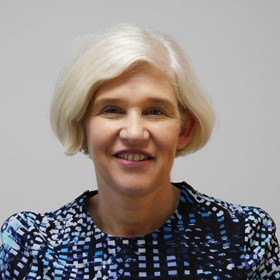3 things we learnt from our stop smoking improvement project
Lynne Reed, Head of Clinical Quality Improvement, FNP National Unit
It’s well documented that improvement work is most often about steady changes rather than miraculous results. And we went into our recent stop smoking improvement project with this in mind.
We were really pleased to observe some green shoots, which gives us confidence that there is something valuable from this project to share with the FNP community.
On top of this, we also learnt some significant things which are relevant to all of our efforts across public health and beyond to support pregnant women to stop smoking.
1. Carbon monoxide monitors are a powerful tool for helping pregnancy women quit smoking.
When we began this project, we were looking for a good quality source of continuous data and to measure the impact of the additional stop smoking interventions we put in place. Carbon monoxide monitors – which are already used by midwives and a small number of FNP teams – felt like a good option.
As part of the co-design process, family nurses explored concerns about introducing the use of carbon monoxide monitors during home visits. Clients might not be receptive to the idea and it might feel overbearing. It might suggest that family nurses weren’t taking clients’ self-reports about smoking habits on face value. Would it erode trust at a crucial period (in pregnancy) for establishing an effective therapeutic relationship?
In fact the majority of pregnant women who smoked were happy to participate in carbon monoxide monitoring and were often open to engaging in conversations about their smoking. Taking readings acted as a natural entry in to the topic. Our theory is that the CO monitor readings help to validate what they self-report about reducing or stopping smoking, giving more incentive to quit, as well as a sense of achievement when the readings show they are on course with their stop smoking goals. This all served to support the important role family nurses can have in this area of practice.
2. We don't know what constitutes a quit in carbon monoxide monitoring.
You might think there’s a consistent agreed ‘quit’ reading for carbon monoxide monitoring – or indeed for how long that needs to be sustained in order to be recognised as a non-smoker. But there’s no existing standard to work to, which means there’s no clear target to aim for and no conclusive way to say that a person has indeed quit smoking.
Deciding on a definitive benchmark is complicated by a number of factors, including the fact that air pollution can affect readings. Non-smokers in inner-city polluted areas can end up with a carbon monoxide monitor reading that looks very similar to a low level smoker.
Why does this matter? It meant that we didn’t have a clear, measurable target to aim for in our improvement project (though we improvised). It also means that there is no clear benchmark in the wider world. How can we improve if we don’t know what good looks like?
If we’re able to define what a quit really looks like, we can give people a “clear and specific goal” to work to – something behavioural science suggests is key in helping people change their habits.
3. There is huge variation in the availability of stop smoking services in local areas.
In the five FNP teams we worked with, the variation in stop smoking support services provision in their respective areas was stark.
In one area, family nurses were able to prescribe nicotine replacement therapy themselves to support clients to quit smoking. In another area, stop smoking services were no longer available, leaving family nurses with nowhere to refer clients on to for support. The accessibility of stop smoking services is key for young parents, who often have limited funds and other issues to address.
The Long Term Plan has set out some ambitious goals to address this, which is fantastic, and targeting services will be key.
Publicly available data shows that people in higher areas of deprivation are far more likely to smoke than those in less deprived areas. This means it’s clear where we can make the biggest gains in our efforts to reduce the number of people who smoke.
FNP has an important role to play in this context and we are pleased to have contributed to the growing body of learning from practice. Pregnancy and early parenthood provide a golden opportunity to help people change their health habits. FNP programme data suggests we’re making some progress and the green shoots we saw in this project are encouraging.
Read more about the project in our report.
